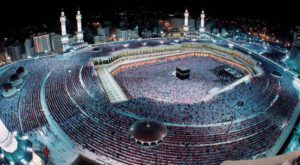AMMAR AHMED KHAN
SUKKUR: Oh great you think. Another article regarding the wonders of Sindh and how you, as the reader should get up off your chair and travel. You’re half right here, since every article starts off like that but why should we follow a pre-determined rule.
Why not do something different occasionally. Right!
First things first, if you go by car, make sure that you have multiple people who can drive and an abundance of snacks. The route to Sukkur is 8 hours with light traffic, so make sure that music blares in the car and your passengers are decently distracted throughout.
The second advice of importance is, never ever make the mistake of not looking outside. As a passenger, if you’re a foreigner visiting Pakistan or a Pakistani it is your duty to know and see the potentials that are present in Pakistan and try to make a difference. The landscape, even if travel by train or plane is taken, is a wonder.
If you’re lucky you might see gur (brown cane sugar) being made. A wonder, despite the price being high you should get a decent amount since the stores in Pakistan will not sell you the original stuff.
When you reach Sukkur the first thing you will see is the Sukkur Barrage. A barrage that holds a great volume of water from the Indus River. A sight that depicts a great deal of activity.
Also present in Sukkur is a very old Hindu temple, a sight to see due to the architecture and the spiritual presence.
As you move away from Sukkur you come across areas unique for very few sights such as Jacobabad.
Jacobabad is well known due to a clock built by Brigadier-General John Jacob (an officer of the British East India Company who served in colonial India for the major portion of his career).
 This clock is famous due to its ability to tell the time in both Pakistan and in London at the same time and is the only clock in the world able to do so.
This clock is famous due to its ability to tell the time in both Pakistan and in London at the same time and is the only clock in the world able to do so.
___________________________________________________________________________________________
At a time drive away of 3 to 4 hours is Mohenjo-Daro now being preserved with UNESCO’s help. A wonder to behold as the architecture is still one of the greatest to be uncovered.
You wonder how do the people irrigate, maintain and then harvest acres of crops, along with the fact that if previous generations of people without the technological advancements of today made such awe-inspiring buildings. You wonder as a human being, just what your potential is and why you aren’t trying to achieve it really.
Forgive the ramblings of the writer; he tends to distract himself from the moulds of the present society.
Back to our topic, the reason you, the reader, chose this article to read despite everything. There is a multitude of sights and historic wonders in Pakistan but the reason we don’t want to see them is simple: They’re not maintained. Would you look at a thousand-year-old clay pot, yes you would.
However, you would be more inclined to see the same clay pot if there were a copy of it made and the original maintained.





